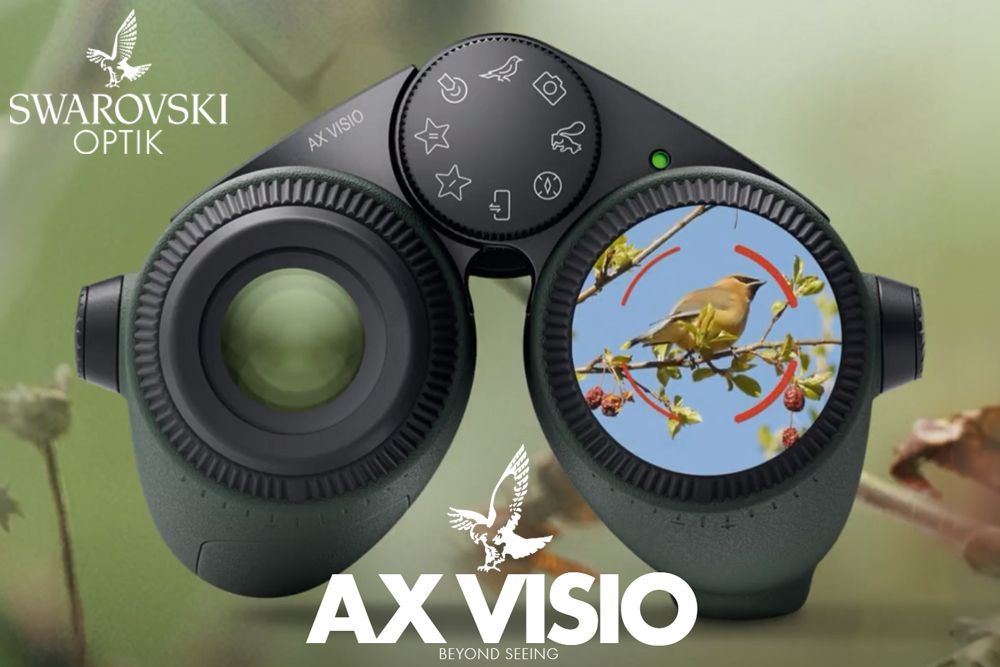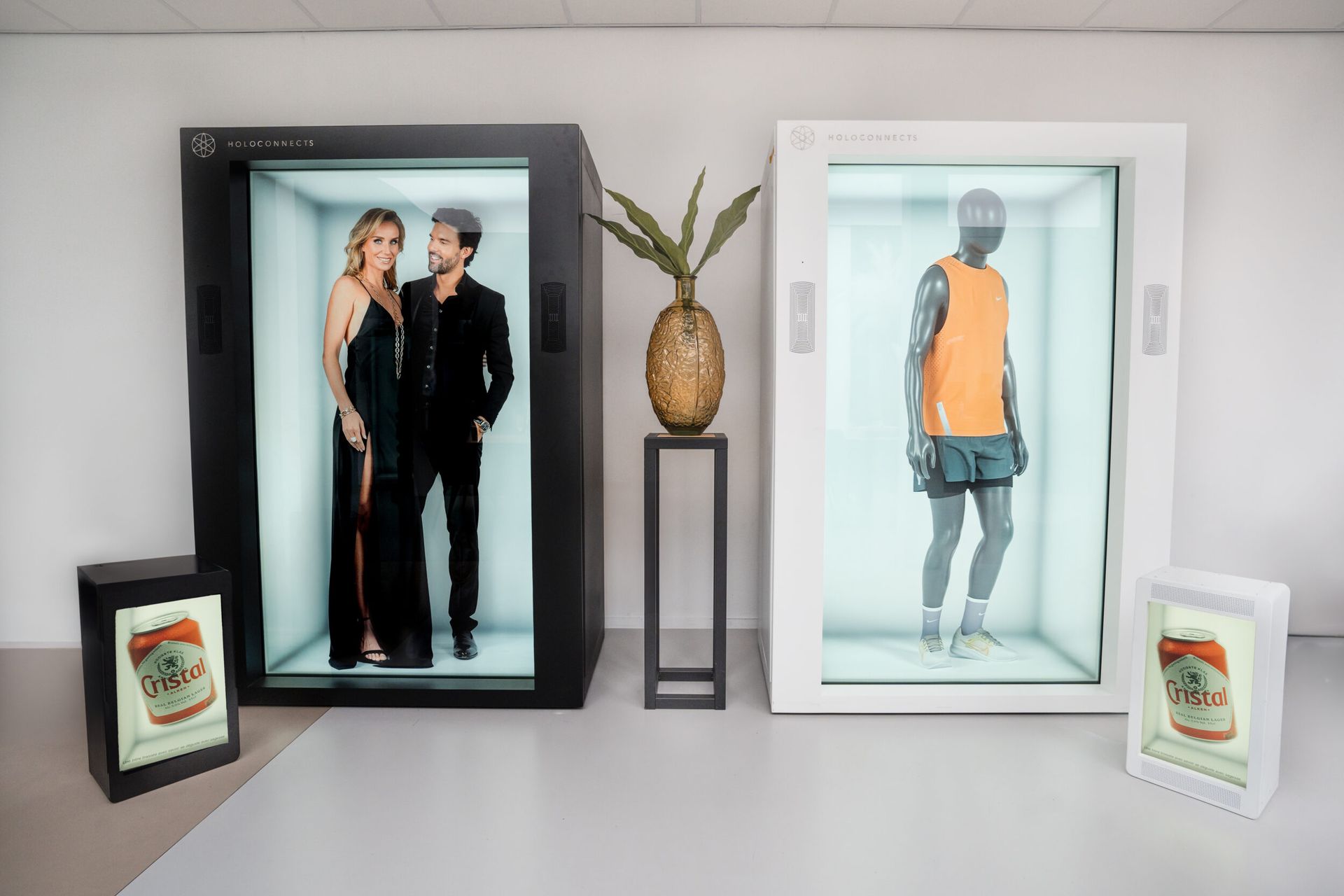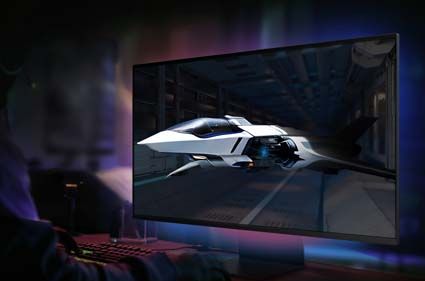/ CES 2024
The Next Connected Experiences:
What We Liked and Loved at CES 2024
Janet Kang and
Nils Beers from the
Extended Experiences team at Mach49, are exploring what's next for mobility, mixed reality, and AI. And the best place for it, is at
CES 2024: picture cars that revolutionise travel, spatial computing blending real and virtual worlds, and smart systems offering tailored assistance.
If these innovations live up to their potential, brands might uncover fresh ways to engage customers with immersive, personalised experiences. The developments previewed at CES 2024 represent an ambitious vision of the future.
Read on to discover what Janet and Nils uncovered in Las Vegas!
Jump to: Mobility | Extended Reality | Personal Assistants | TVs & Displays
Mobility
Hyundai DICE
DICE (Digital Curated Experience) is an autonomous vehicle that provides curated personalised experiences to passengers. It uses spatial computing and smartphone integration to transform the interior of the vehicle to suit the passenger’s physical and functional requirements. The transparent OLED walls of the vehicle optimises its display based on how the passenger would like to spend their journey, for example it can display entertainment, transform into an office space, or simply create an environment to relax. Moreover, an AI agent helps optimise the passenger’s journey and will learn individual preferences. Last but not least, the vehicle sustainably runs on hydrogen fuel cells.
Why we like it
The DICE certainly looks like SciFi but has core elements that we believe will be integral in the future of mobility: autonomous driving that opens new avenues for entertainment, and renewable energy sources like hydrogen power. DICE creates a new environment, like an extension of a smartphone where passengers can now connect with brands. It provides passengers an opportunity to make use of time that was previously lost to commuting hours. This enables passengers to be more productive in their time in transit, connect with friends and family on their journey, and frees up time at the destination to do things that really matter.

Source: Hyundai Motor Group at CES
Afeela
Sony and Honda have partnered up to create joint venture Afeela and at CES we saw an updated prototype of its electric sedan concept. Like a remote controlled toy car, Afeela moves via a console . But we are more excited about what’s featured inside the vehicle. The car features a large dashboard for entertainment that is customisable with immersive sounds, ambient lighting, movies, and gaming. Using Unreal Engine 5, the display will non-disruptively show “new discoveries” along the drive, such as nearby restaurant recommendations. Afeela also boosts a conversational personal agent to help optimise the driving experience.
The exterior of the vehicle features a “media bar” where the car can display announcements such as vehicle charging status and for general personalisation. This is all part of Afeela’s strategy to achieve an interactive communication experience. Last but not least, the Afeela team plans to reach level 3 autonomous driving for specific conditions and level 2 plus driving assistance for city areas - giving drivers peace of mind. The car opena for pre-order in 2025, for 2026 delivery.
Why we like it
It’s no doubt that we head into Mobility 2.0 and concept cars like Afeela are taking the lead. Changing the way humans get from place to place and interact with their vehicles and surrounding environment, creates exciting new opportunities for brands to connect with their customers. As autonomous driving becomes safer and more popular, time freedom for drivers opens up where brands engage with customers.
Additionally, passengers in display-heavy vehicles will be able to spend more time online or watching movies, where brands can attract attention. The “new discovery” feature while driving, presents opportunities for brands to creatively add experiences to the drive and give drivers front of mind awareness as they voyage to new locations. All the data collected through entertainment systems (let alone location services) can help brands engage with customers in a more personalised way.
Source: Sony Honda Mobility
Kia Platform Beyond Vehicles
Kia’s PBV concept features modular and customizable vehicle designs that are fit for purpose. A versatile rail system on the ceiling and sides of the vehicle, enable it to transform from a people mover to a pop-up shop and beyond. The roadmap to launch includes 3 phases: in Phase 1, Kia will launch PV5, an optimised vehicle for ride-hailing, delivery, and utilities. Phase 2 involves an AI-based mobility platform to interact with users and provide software updates and Phase 3 will be highly customisable and bespoke. Kia plans to open a designated factory for production in 2025 that can produce 150,000 vehicles annually.
Why we like it
Redefining use cases and space requirements for a vehicle gives brands entirely new venues to reach customers. No longer do brands have to grasp customer attention on their phones - they can help customers set-up a pop-up shop, or help the owner of the pop-up shop engage with their own customers. A highly customisable car from both the hardware and the software components gives companies an opportunity to provide personalised experiences.
Source: Kia
The Hyundai Supernal S-A2
Supernal’s electric vertical take-off and landing (eVTOL) is working on the mission to make Advanced Air MObility AAM safe and reliable for every day. Supernal announced its original concept S-A1 at CES 2020 and we were excited to see their strong progress on their roadmap to make commercial aviation an affordable and green mode of transportation. The company works in an open system and closely collaborates with public transportation agencies, as it prepares to enter the market in 2028. The aircraft can cruise 120 mph at 1,500ft and is virtually silent (its takeoff sound matches the decibel levels of a dishwasher!).
Why we like it
We have all been waiting for flying cars and this may be the closest we've been. Mobility 2.0 will take many forms that extend past autonomous driving and this is a great example! The future of aviation offers consumers new means to reach audiences, including unique experiences and partnerships that involving air travel. Additionally, we're seeing more and more companies experiment with drone delivery services and we believe eVTOL vehicles can play a huge role in improving customer satisfaction with delivery times, while providing an environmentally friendly option.
Source: Supernal, CES
Extended Reality
Swarovski Optik AX VISIO
The AX VISIO launched the world's first AI-supported binoculars. With a touch of a button, the binoculars help identify more than 9,000 birds and other wildlife. The core of the AX Visio is its fast Neural Processing Unit (NPU) and robust object-recognition system. Its camera enables the user to easily capture photos and videos and with an integrated SWAROVSKI OPTIK Outdoor App allows users a new means to share new discoveries with others in real-time.
Why we like it
The AX VISIO is a perfect example of how AI can be used to bring community members together by sharing a hobby. Birds and other wildlife, which are difficult to see with the naked eye, has now been made easier with the sharing functionality where members can draw arrows to point to the location of the animal. We believe this is the tip of the iceberg on how AI can transform outdoor hobbies and sports.

Source: EuroOptic.com
Lotte Caliverse
While we were impressed with Caliverse's virtual-based shopping experience last year, the platform's capabilities are now much more expansive and realistic, thanks to updates by Unreal Engine. In immersive environments such as a concert, users meet artists and interact with avatars and audiences in real time, to create a shared experience. In the shopping realm, customers can now touch products and ask questions to sales reps, mimicking the real-world shopping experience. The details say it all when it comes to Caliverse, as they have focused on realistic avatars and experiences that promote life-like interactions - and a true sense of community.,
Why we like it
This multibrand metaverse gives customers a new way to interact with each other and with brands. While other digital experiences fall short of consumer expectations, Caliverse offers some of the most life-like interactions with the digital world we've seen so far, making brand interactions high quality.

Source: Lotte Data Communication Company (LDCC)
XREAL Air 2 Ulta
XREAL released their latest AR headset, the world's first titanium AR glasses. While not XREAL’s first AR glasses, the Air 2 Ulta is lighter, offers a wider range of view, and is designed with the AR developer at its core. The glasses allow users to build their own 3D spaces anywhere and blend digital and physical worlds with little disturbance due to sound dispersion and image tracking. Sensor and spatial technology allows users to interact with the digital world through hand gestures, without the need for additional controllers.
Why we like it
From users engaging directly with advertising to immersive shopping experiences to digitally try on apparel, it's clear that AR technology provides many new avenues from brands to connect to users. This enables brands to create more personalised experiences and collect data on how individuals interact with brands online. Compared to headsets, glasses are less cumbersome to wear and can be easily transported. With Apple’s highly anticipated Vision Pro release in just a few weeks, we are excited Air 2 Ulta is a more affordable option.

Source: Tech Times
Holoconnects
Holoconnects is a leader in AI powered holographic technology and brought their Holobox Mini to CES 2024. The Holobox can serve hospitality, travel, entertainment, education and more. Yet another staple to SciFi, Holographs are a game changer for how users interact with each other and brands remotely.
Why we like it
While this technology is not new, it is certainly improving with significant advancements in AI. Corporates can use holoconnects for product demonstrations and offering immersive shopping experiences such as virtual fashion shows. Virtual assistants can help customers in engaging ways and, with AI, can offer personalised shopping experiences. Compared to other Holograph demonstrations we have seen, we are excited about the significant progress the industry has made to provide more realistic and interactive 3D holograms.

Source: Holoconnects
Personal Assistants
Samsung Ballie
Back in 2020, Samsung announced AI smart home companion Ballie, but we are even more impressed in 2024. New features enable Ballie to help users with tasks including displaying projections onto walls to set the mood or for a workout class. Ballie texts photo updates of pets while home owners are away and connects to other smart devices to manage home appliances. Ballie autonomously roams the house, learning user habits to provide personalised services.
Why we like it
Robotic assistants are here to stay and they provide a whole new meaning to the word "companion". Ballie redefines what it means to stay home while staying connected, providing peace of mind when you are away from home. Ballie’s display feature allows brands to connect with users at home, even while they are doing chores or working out. With Ballie’s projection anywhere, a screen can connect with brands.
Source: Samsung
Rabbit R1
Virtual assistants were front and center at CES with Rabbit R1 taking the spotlight. Rabbit R1 is a blend of a voice assistant like an “Alexa” and a smartphone, but differs in its operating system. Known as Rabbit OS, it runs on an AI-driven large language model. The simple single interface has no apps or logins but will use its ChatGPT like operating system to respond to voice commands. Behind the scenes, the device navigates through app interfaces to be able to perform activities typically controlled on a smartphone, such as texting, calling a taxi, and responding to general search queries. Rabbit R1 is quick to learn how to navigate new apps with instructions such as “open photoshop and remove watermark.”
Why we like it
Virtual assistants are a great way to help brands better understand their customers and streamline operations to make sure customers have the best brand experience. Virtual assistants often provide customer service and we expect to see language models increasingly used to answer customer queries and help consumers engage deeper with a brand. We are excited to see different variations of virtual assistants and think the simple display of the Rabbit R1 neatly packages up the power of the complex operating system within.

Source: The Verge
L’Oreal Beauty Genius
L’Oreal hosted their first ever keynote at CES 2024 and launched their Beauty Genius, a virtual personal beauty advisor. The advisor is a fully personalized AI solution that uses generative AI, augmented reality, and computer vision to recommend tailored beauty and wellness products and routines. It further connects personalised educational tutorials from social media to teach users how to apply new products and allows users to try on new products before purchasing them.
Why we like it
Compared to some of the hardware-focused solutions showcased at CES, we believe that this digital platform is exemplary for the kinds of connections that brands build with consumers via technology. Consumers are increasingly looking for personalised recommendations and to build trust in products. Beauty Genius connects users with educational content on new products and services, to fit their specific needs. This is not the first time that we have seen “try on” style augmented reality, but we are really impressed with the quality of the imagery and the integrations with the LLM technology. We expect to see this trend continue in 2024 and beyond, adding immersive touch points between brand and customer.
Source: Kia
BMind
BMind is an AI smart mirror designed for holistic well-being. The mirror gauges users energy levels and adapts its display by interpreting expressions and gestures through computer vision and LLMs. The mirror acts as a mindfulness coach for users to prioritise their well-being. The CareOS platform that serves as the operating system for the mirror, provides personalised recommendations, such as exercises, to elevate mood and provides an immersive experience to mitigate loneliness. So far, the CareOS is compatible with 40 partners - including ThrivePal: an AI-coach for personalised self-improvement.
Why we like it
BMind demonstrates many trends that we see heading into 2024, such as AI-powered smart devices in the home and focus on well-being. We believe that brands should think creatively on how and where in the home they reach consumers ,in addition to the delivery method, to leave the consumer in the best mindset and mood after the interaction. AI technology continues to get smarter in understanding human behaviour and nuances. This leads to more personalised content and enables stronger consumer-brand connections. Even from a bathroom mirror.

Source: Baracoda
TVs & Displays
LG Signature TV
Transparent TVs definitely made its mark at CES 2024, from both Samsung and LG. The trick to LG’s Signature TV is that the front OLED panel is transparent, with a contrast screen behind it, that can be raised while watching the TV (and lowered when not in use to provide a 3D transparent display). While this technology has been seen before, this is the first time it's offered to a large consumer audience - likely coming out later this year. The TV is wireless and aesthetically pleasing, opening the range of possibilities where the TV can physically fit within a space.
Why we like it
This is the first time we have seen a TV give a 3D-like display without any additional hardware. This will revolutionise the way consumers interact with their TVs. The aesthetics of the TV provides unique advertising opportunities, such as in immersive window displays. And the customisable toolbar on the display screen, allows customers to get important information and alerts without disrupting the content on the TV. In essence, the TV becomes dual-functional. Not only do brands have the opportunity to reach customers via programming, they are also able to create experiences for the digital display.
Source: LG
Samsung 3D Gaming Monitor
The new gaming monitor offers 3D images in 4K resolution, providing high levels of immersion. The combination of proprietary screen technology, AI vision recognition, and high eye- and head tracking accuracy, provides VR-like experiences. In this manner, gamers can seamlessly go between 2D and 3D gaming on the same monitor, without a headset.
Why we like it
Gamers are often early adopters of immersive technologies and we think they are going to love this new gaming monitor. We are especially excited about all the applications of 3D monitors without headsets, given disadvantages such as price point and motion sickness. We believe these monitors will extend the reach of XR adoption, giving brands an opportunity to reach their audience in a new dimension.

Source: CES



